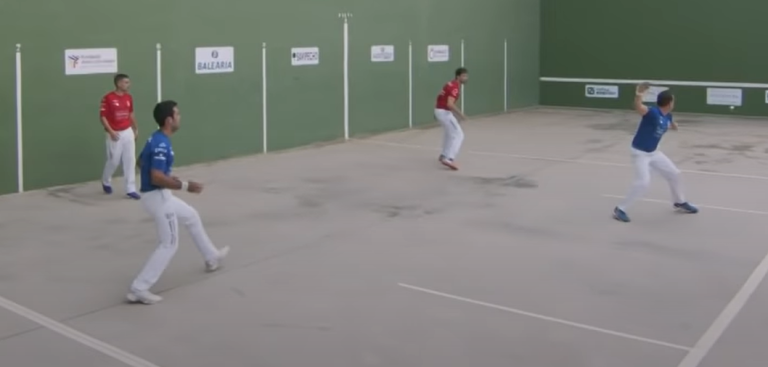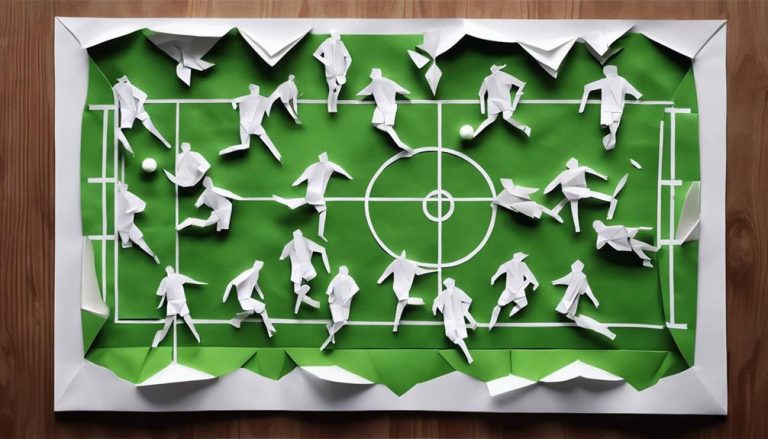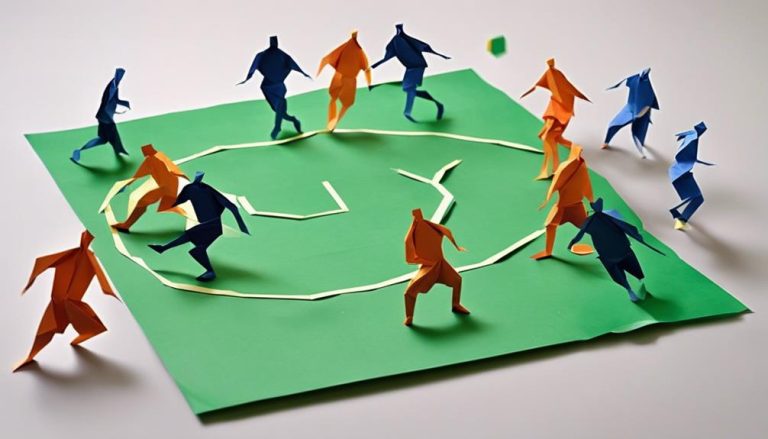General Rules of Gilli Danda
To excel in Gilli Danda, grasp the essentials: gilli (3-4 inches) and danda (24-30 inches). Create a play area (around 2m x 1m) ensuring smooth sticks and safe ground. Aim to strike the gilli skillfully with the danda. Learn scoring techniques for victory based on distance covered. Focus on stable grips, balance, and accuracy. Earn points for gilli distance and successful hits. Adhere to rules, etiquette, and safety guidelines, emphasizing respect and fair play. For a deeper understanding of this engaging game, explore techniques, variations, and more.
History of Gilli Danda
Have you ever wondered about the origins of Gilli Danda, a traditional game deeply rooted in South Asian culture? The evolution of Gilli Danda can be traced back to ancient times, where it was not just a game but a way of life for many communities. This simple yet engaging pastime has held cultural significance for generations, symbolizing agility, precision, and camaraderie.
The game has evolved over the years, adapting to different regions and communities, each adding its unique flair to the rules and techniques. In some areas, Gilli Danda is not just a game but a rite of passage, where skills are honed, and bonds are strengthened between players. The cultural significance of Gilli Danda lies in its ability to bring people together, regardless of age, gender, or social status. It transcends barriers and fosters a sense of unity and joy among participants.
Understanding the evolution and cultural importance of Gilli Danda sheds light on the deep-rooted traditions and values that continue to resonate in South Asian societies today.
Equipment Required for the Game
Before you start playing Gilli Danda, it's important to understand the essential game tools, the necessary playing area, and the required safety precautions. These three key points will give you the foundation needed to enjoy the game to its fullest potential. By familiarizing yourself with the equipment requirements, you can guarantee a smooth and safe playing experience.
Essential Game Tools
To play Gilli Danda, players must make sure they have the essential game tools, consisting of a wooden stick (gilli) and a small piece of wood (danda). The gilli is typically about 3-4 inches long and pointed at both ends, while the danda is around 24-30 inches long. These tools are important for executing various game techniques and player strategies effectively. Below is a table summarizing the essential game tools required for Gilli Danda:
| Game Tools | Description |
|---|---|
| Wooden Stick | 3-4 inches long, pointed ends |
| Small Piece of Wood | 24-30 inches long |
Having the correct tools ensures that players can engage in the game properly, showcasing their skills and enjoying this traditional pastime.
Required Playing Area
Creating the ideal playing area for a game of Gilli Danda necessitates attention to specific dimensions and surface conditions. The required dimensions for a suitable surface are typically around 2 meters by 1 meter, providing ample space for players to maneuver without feeling constrained. The ideal space should be free of any obstructions that could impede the game, ensuring a smooth and enjoyable experience. Additionally, the ground should be level to prevent the Gilli from bouncing unpredictably, maintaining fairness for all participants. A proper ground not only enhances the gameplay but also reduces the risk of injuries due to uneven surfaces. By setting up the playing area with these considerations in mind, you can fully immerse yourself in the traditional game of Gilli Danda.
Safety Precautions
Make sure that you have the necessary equipment for a game of Gilli Danda to prioritize safety during play. When it comes to playing this traditional game, having the right gear is vital for injury prevention and ensuring a fair game. Here are some key points to take into account:
- Gilli: Make sure your gilli is smooth and straight to prevent any unexpected bounces or injuries during play.
- Danda: Check that your danda is sturdy and free of any splinters to avoid accidents while striking the gilli.
- Playing Surface: Ensure the ground is clear of any obstacles or debris that could cause tripping or interfere with the game.
How to Set Up the Playing Area
When preparing the playing area for a game of Gilli Danda, consider selecting a flat, open space free of obstacles. Setting boundaries and marking points is essential to define the limits of the playing field. Use chalk or tape to clearly outline the area where the game will take place. Creating obstacles strategically can add an element of challenge for the players. Incorporating small hurdles or markers that players need to navigate around can make the game more engaging and competitive.
Ensure that the boundaries are visible and well-defined to prevent any disputes during the game. The playing area should be spacious enough to allow players to swing the danda freely without any hindrances. It's important to check the ground for any hazards like rocks, tree roots, or uneven surfaces that could pose a safety risk. By setting up the playing area thoughtfully, you create an environment that enhances the gameplay experience and encourages fair competition among participants.
Basic Rules of Gilli Danda
When playing Gilli Danda, understanding the objectives of the game is essential for success. Scoring and points play a significant role in determining the winner, making it vital to grasp these concepts. Additionally, mastering various playing techniques and strategies can give you an edge over your opponents.
Objectives of the Game
Typically, the main objective in the game of Gilli Danda revolves around skillfully striking the gilli with the danda to achieve specific distances or targets. To excel in this traditional game, consider the following key points:
- Strategy Tips: Develop a strategy to strike the gilli with precision and force, aiming for maximum distance or specific targets.
- Scoring Techniques: Experiment with different hitting techniques to improve scoring and enhance your gameplay.
- Holding Techniques: Master the art of holding the danda to guarantee a powerful and accurate strike, essential for achieving your objectives.
Understanding these fundamental aspects will greatly contribute to your success in Gilli Danda, providing you with a competitive edge in the game.
Scoring and Points
To calculate scores and points in the game of Gilli Danda, players must adhere to specific rules and guidelines regarding successful hits and distances covered. Scoring techniques in Gilli Danda involve earning points based on the distance the gilli travels after being hit. When the gilli is struck and lands within a certain distance, players receive varying points depending on where it lands. Typically, hitting the gilli closer to the center point results in higher points compared to hits landing farther away. Point distribution is essential in determining the winner of the game, as players aim to accumulate the most points through strategic hits and accurate placement of the gilli. Understanding the scoring techniques and point distribution is fundamental to mastering the game of Gilli Danda.
Playing Techniques and Strategies
As players engage in the game of Gilli Danda, understanding the fundamental playing techniques and strategies is paramount for achieving success and mastering this traditional sport. When it comes to playing Gilli Danda, the following aspects can greatly enhance your gameplay:
- Strategy Tactics: Developing a solid game plan can help you outwit your opponent and secure more points efficiently.
- Playing Styles: Explore different playing styles to find what suits you best, whether it's a more aggressive approach or a defensive one.
- Trick Shots and Defensive Moves: Mastering trick shots can surprise your opponent and give you an edge, while defensive moves can help protect your score and prevent your opponent from gaining an advantage.
Techniques for Holding the Gilli
When grasping the Gilli in Gilli Danda, make sure your fingers are positioned firmly and securely around the smooth wooden stick to maintain control and accuracy during gameplay. The way you hold the Gilli can greatly impact your performance in the game. Here are some grip techniques and balance tips to help you master this aspect:
| Grip Techniques | Balance Tips |
|---|---|
| 1. Hold the Gilli towards the center for better control. | 1. Keep your feet shoulder-width apart for stability. |
| 2. Use a combination of firmness and flexibility in your grip. | 2. Maintain a slight bend in your knees to absorb movement. |
| 3. Make sure your thumb and index finger are secure for precision. | 3. Focus on a fixed point to aid in balancing. |
In Gilli Danda, swing control and power generation are essential for a successful gameplay experience. By mastering these techniques, you can improve your performance and enjoyment of this traditional game.
Scoring System in Gilli Danda
When it comes to the scoring system in Gilli Danda, players earn points based on the distance the gilli travels, the number of successful hits on the gilli, and bonus points awarded for using specific techniques. Understanding these points is important as they determine the player's success in the game and add an element of strategy and skill to the gameplay. By keeping track of these scoring elements, players can enhance their performance and aim to achieve higher scores in each round of Gilli Danda.
Points for Distance
In the traditional game of Gilli Danda, scoring points for distance is essential for determining the skill and precision of the players. Achieving accuracy in the distance the gilli travels showcases the player's control and technique mastery. To further incentivize players and add excitement to the game, bonus points are awarded for exceptional performances. Here's how it works:
- Distance Accuracy: The closer the gilli lands to the target point, the higher the points scored.
- Scoring System: Points are allocated based on predefined distances, encouraging players to aim for specific markers.
- Technique Mastery: Players who consistently hit challenging distances demonstrate advanced skills and earn recognition within the game.
Mastering the art of gauging distance gives players an edge and elevates their gameplay.
Hits on the Gilli
To understand the scoring system in Gilli Danda, one must grasp the significance of achieving hits on the gilli with precision and skill. Proper grip and a controlled swing are essential in ensuring successful hits. The player needs to strike the gilli with accuracy and at an ideal distance to score points. A precise hit on the gilli allows for a smoother gameplay experience and showcases the player's mastery over the game. Target accuracy is key to accumulating points, as hitting the gilli at varying distances can result in different point values. By focusing on improving grip, refining swing techniques, and honing target accuracy, players can enhance their scoring capabilities and elevate their Gilli Danda performance.
Bonus for Technique
Mastering the technique of striking the gilli with precision and finesse in Gilli Danda can lead to earning bonus points in the scoring system. Improving accuracy and power control are essential to enhance your gameplay and increase your chances of scoring higher in this traditional sport. Here are some key aspects to focus on for maximizing your bonus points:
- Consistent Contact: Ensuring that your danda makes contact with the gilli consistently.
- Striking Technique: Perfecting your striking technique to achieve best power and accuracy.
- Controlled Force: Balancing the force applied to strike the gilli to prevent overshooting or falling short.
Common Fouls and Penalties
Rarely do players intentionally commit fouls in Gilli Danda; however, when they do occur, understanding the common infractions and penalties is important for maintaining fair play. Player conduct is vital in upholding the integrity of the game. Common fouls include touching the gilli with any body part other than the danda, obstructing the opponent's view during a hit, or using excessive force when striking the gilli. These actions can result in penalties such as loss of turn or even disqualification, depending on the severity of the offense.
Game interruptions, such as distractions caused by spectators or external factors like weather conditions, can also lead to penalties. In such cases, players may need to pause the game until the interruption subsides or agree on a fair way to resume play. It is essential to handle these situations calmly and fairly to guarantee that both players have an equal opportunity to showcase their skills in the game. Remember, maintaining sportsmanship and abiding by the rules is key to enjoying a truly fulfilling Gilli Danda experience.
Tips for Improving Your Gameplay
For enhancing your performance in Gilli Danda, mastering the fundamental techniques is crucial to excel in the game. To improve your gameplay, consider incorporating the following tips:
- Practice Drills: Engage in regular practice sessions focusing on your striking technique, aiming for accuracy and distance. Consistent practice will help you develop better control over the gilli and danda, enhancing your overall performance during the game.
- Strategic Positioning: Pay close attention to your positioning on the playing field. Strategic placement can give you an advantage by making it easier to hit the gilli with precision and force. Experiment with different angles and distances to find the most suitable position that works best for your playing style.
- Mindful Observation: Observe the gameplay of experienced players to learn new techniques and strategies. By studying their moves and approaches, you can gain valuable insights that may help elevate your own performance in Gilli Danda.
Variations of Gilli Danda
To explore the various adaptations and modifications of Gilli Danda, understanding the traditional rules and gameplay mechanics serves as a solid foundation. Different variations of Gilli Danda exist across regions, each adding a unique twist to the game. Some variations include using a larger or smaller gilli, altering the distance between the danda and the gilli, or introducing obstacles on the playing field. These variations can challenge players to adapt their strategies and gameplay techniques.
Popular techniques in Gilli Danda include adjusting the force and angle of the hit to control the gilli's trajectory effectively. Players often employ spin and precision to score points, aiming to hit specific markers or achieve maximum distance. Scoring in Gilli Danda varies depending on the rules of the specific variation being played, with points awarded for different achievements such as hitting certain targets, hitting the gilli a certain distance, or maintaining a successful streak of hits. Exploring these varied adaptations can add excitement and new challenges to your Gilli Danda experience.
Safety Precautions to Keep in Mind
Ensuring a safe and enjoyable Gilli Danda experience entails prioritizing precautions that safeguard both players and spectators. When engaging in this thrilling game, it is essential to keep safety at the forefront of your mind to prevent any accidents or injuries.
- First aid: Always have a first aid kit readily available in case of any minor injuries like cuts or bruises. Knowing basic first aid procedures can also be beneficial in handling unexpected situations efficiently.
- Supervision safety: It is important to have responsible adults or individuals supervising the game, especially if children are participating. Supervisors can help guarantee that the game is played in a safe manner and intervene if any risky behavior is observed.
- Equipment check: Before starting the game, inspect the Gilli and Danda to ensure they are in good condition. Avoid using damaged or splintered equipment to prevent any mishaps during the game.
Frequently Asked Questions
Can Gilli Danda Be Played Indoors or Is It Strictly an Outdoor Game?
You can play gilli danda both indoors and outdoors. Indoor play requires adjustments in techniques and hit angles due to limited space. Outdoors, you have more freedom to execute the game as per traditional rules.
Are There Any Specific Techniques or Strategies for Hitting the Gilli at Different Angles or Distances?
To hit the gilli effectively at various angles and distances, you must master precision hitting. Advanced techniques involve adjusting your swing and stance. Experiment with different strategies to improve your skill in Gilli Danda.
Is There a Recommended Age Range for Playing Gilli Danda, or Can Anyone of Any Age Participate?
Any age can participate in playing gilli danda, promoting physical activity. The game offers benefits like improving hand-eye coordination and enhancing focus. Safety precautions include choosing appropriate equipment and playing in a safe environment to prevent accidents.
Are There Any Traditional Songs or Chants That Are Commonly Sung While Playing Gilli Danda?
When playing Gilli Danda, traditional songs and chants can add to the fun and camaraderie. Popular variations of these songs can be heard in different locations, infusing the game with cultural richness and shared experiences.
Are There Any Famous Players or Competitions Associated With Gilli Danda?
In the world of gilli danda, famous players emerge from local communities to compete in thrilling gilli competitions. Indoor play allows for skill refinement, showcasing various hitting techniques. Players of all ages enjoy this traditional sport, often accompanied by rhythmic traditional songs.






